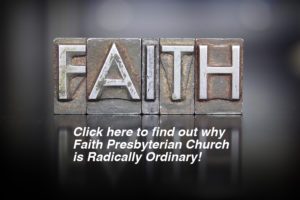Revelation 1:1-5
1 The revelation of Jesus Christ, which God gave him to show to his servants the things that must soon take place. He made it known by sending his angel to his servant John, 2 who bore witness to the word of God and to the testimony of Jesus Christ, even to all that he saw. 3 Blessed is the one who reads aloud the words of this prophecy, and blessed are those who hear, and who keep what is written in it, for the time is near.
4 John to the seven churches that are in Asia:
Grace to you and peace from him who is and who was and who is to come, and from the seven spirits who are before his throne, 5 and from Jesus Christ the faithful witness, the firstborn of the dead, and the ruler of kings on earth. [1]
In Romans 8 Paul pictures a sheep led to slaughter that became a super-conquering sheep in Christ. In your mind, you could picture a lamb with a superhero cape. Revelation is Jesus’ picture book to his persecuted people. It even contains a more detailed picture of Christ as the super-conquering lion-lamb we glimpsed in Romans 8. And the superconquering lion-lamb is the theme of John’s letter. We can sum up the purpose and meaning of this epistle in two words: Jesus wins!
Normally, I like to just dive into a book of scripture and explain it as we study through verse-by-verse and passage-by-passage. But this letter from John to the congregations of Roman Asia has spawned so many different interpretations over the centuries, we need to have a sense to those differing views.
FOUR BASIC INTERPRETATIONS
There are four basic interpretations of Revelation, the most popular in the 20th and 21st-century evangelicalism being the futurist view. In the futurist view, chapters 4 through 22 read like a newspaper article of future events in which all the pictures and symbols are predictions of things yet to come. Hal Lindsey’s famous book from the 1970’s, The Late, Great Planet Earth, is a prime example of the futurist view. Futurist interpretations change constantly with current events.
I will not be taking this view. So, I won’t be identifying the Antichrist; we won’t discuss America or Russia or China or the nation of Israel’s place in future news cycles. We won’t link locusts with Apache helicopters or spears with thermonuclear missiles. There will be no talk of blood moons or solar eclipses as God’s special warnings to America.
Another interpretation of Revelation sees the letter as having taken place entirely (or almost entirely) in the past. This view, preterism, is held by a minority of conservative Christians today. Preterism believes the letter was written before the Roman destruction of Jerusalem in 70 A.D. It is the opposite view from futurism, holding that everything in the books has already taken place with the possible exception of Christ’s second coming and the resurrection. To preterits, this letter is predominately about the judgment of Jerusalem with the number of the Beast (666) spelling out the name “Neron Caesar.” There are a great many solid conservative scholarly commentaries available which thoroughly debunk this view.[2]
A third interpretive theory of Revelation is historicism, which teaches the letter plots the history of the church from the time of the apostolic age up to the time of the Reformation. The Harlot of Babylon in Rev. 18 is identified as the papacy of the Roman church, a view we find in the earliest version of the Westminster Confession. This view has gained few followers past the 18th century.
The fourth and final view is known as idealism. This is the view we’ll be taking in our study. We will see Revelation describing the inbreaking of Jesus’ kingdom between the time of his first and second coming. As Jesus’ kingdom breaks into the sinful world, there is conflict and intense struggle. All the visions of Revelation describe the same conflict in the same time period – the age of the church in the world.
Each vision is a replay of the same scene from a different perspective. Think of it like a football game with seven different cameras replaying the same crucial play from seven different camera angles. The apostle John is the play-by-play announcer and an angel is the color commentator. And, in those seven replays of the same event there are seven different things going on – all in a letter written to seven churches in Roman Asia by the apostle John in A.D. 95 or 96.
Revelation doesn’t depict strictly future nor strictly historical events. It does not exhaustively map out the history or future of the church age. Rather, it is a seven-fold description of the ongoing struggle between Satan and his agents (the beast and the dragon) against Christ and his elect people. And, in case you missed it earlier, I’ll tell you again: Jesus wins!
REVELATION [3]
I remember many years ago being worn out over all the different interpretations of Revelation. Growing up in the 1960s and 70s conservative evangelical culture and living in the age of the Cold War, Revelation was THE hot topic and future prophecy was all the rage. The images of Revelation were being constantly re-interpreted with each new newspaper headline. Fast forward 20 years when I exclaimed in front of my pastor in a reformed church, “I wish somebody would tell me what this letter really means!” So, he started a sermon series on Revelation. And he made John’s letter make sense. That’s what we will strive to do in this series.
John says right up front that this letter is, “The revelation of Jesus Christ….”[4] The word “revelation” means an unveiling. It is something to be seen and understood rather than something to be puzzled over and obscured. And Jesus does not reveal himself for us to speculate on future news headlines. When Christ reveals himself in all his glory in his Word, our response should be John’s response in verse 17: “When I saw him, I fell at his feet as though dead.” [5] Revelation is intended to lead you to fall at the feet of Christ with a sense of joy and victory and amazement at his sovereign power.
Culture
In many ways, this letter is like a foreign country to us because it has a different language and different customs. But John gives us a lesson on the culture of his letter in these first five verses. We can sum it up in four simple terms, the first of which is: 1) revelation – that’s the very first word in the original text. The kind of revelation found in this letter is called apocalyptic literature (from the Greek word translated “revelation;” it means “unveiling”). In apocalyptic culture, animals and colors and places and numbers all have symbolic significance.
Think of C.S. Lewis’ Chronicles of Narnia with talking animals, or Tolkien’s Lord of the Rings with its fantastic creatures. Unless you’re drawn into the culture of those books, you will miss the point. In our world, a stepmother can be a wonderful thing. But in fairytale culture, a stepmother is a nasty person.[6] In Revelation, the number 7 is a symbol and a repetitive pattern. Here animals have power — they represent something in the way a longhorn stands for the University of Texas and a Roadrunner represents UT San Antonio and a Bear stands for an embarrassingly bad football team in the Big 12 Conference.
What we are primarily called to see in this apocalyptic letter from the apostle John is NOT a book of puzzles, but a revelation of the glory of the Lord Jesus Christ. The second thing we need to know about this letter is that it is: 2) a vision.
VISION
John uses the language of vision, of seeing things. Ordinarily, scripture employs communication of words and the means of hearing. But in this letter, the emphasis is on what John saw. John was commanded, “to show to his servants the things that must soon take place.”[7] One of the most frequent expressions in the letter is John’s phrase, “And I saw….” It occurs 11 times in the ESV and 15 times in the NASV. The most frequent exhortation of the biblical writers is to “hear” to word of God. But in Revelation, one needs to “see” the word of God.
John’s descriptions of the images he sees are not new and novel. Almost three-quarters of the verses in John’s letter allude to an Old Testament scripture. “The range of OT usage includes the Pentateuch, Judges, 1-2 Samuel, 1-2 Kings, Psalms, Proverbs, Song of Solomon, Job, and the major and the minor prophets. Roughly more than half the references are from the Psalms, Isaiah, Ezekiel, and Daniel, and in proportion to its length Daniel yields the most.”[8]
So, as we study this letter, the question is not “Do you hear this?” Rather, it’s “Do you see this?” John’s letter is a revelation. John’s letter is a vision. The third thing we need to see is that John’s letter is a prophecy.
PROPHECY
What IS a prophecy? You might answer that a biblical prophecy is a statement about something in the future. But most of the prophecies found in scripture don’t so much concern the future as they speak the word of God into the present. Even prophecies that deal with future events are given so that God’s people will live for God’s glory in the present. Prophecy is forthtelling, a revelation of the will of God to God’s people that demands their response. A person who received revelation from God about God with a call to tell others was a prophet. Adam was a prophet. Noah was a prophet. Abraham was a prophet. Moses was a prophet. All the apostles were prophets – not just John. And the greatest prophet of all was the Lord Jesus Christ because he is the full, perfect, final revelation of God to man.
Five times, starting in 1:3 John identified this letter as a prophecy. But it’s not simply a forthtelling of God’s will, it contains foretelling as well. These foretellings are not merely things to come in the distant future but things to come in John’s immediate future as well:
…God gave him to show to his servants the things that must soon take place. … 3 Blessed is the one who reads aloud the words of this prophecy, and blessed are those who hear, and who keep what is written in it, for the time is near. [9]
“Soon” and “near” to John and the congregations of Roman Asia are the things revealed in this book. “The Book of Revelation repeatedly states that its contents relate to the time at hand (1:1, 3; 22:6, 10). It informs the readers that its message is applicable to the time in which they are living….”[10] John’s language mirrors phrases found in Daniel 2 where Daniel reveals what God has planned for latter days (Dan. 2:28). In mirroring Daniel’s language, John is pointing out that God’s people have entered Daniel’s latter days.
Occasionally I hear believers reference some terrible social or political event or some great natural disaster to proclaim that we are now clearly living in the “last days.” But if we understand the New Testament writers, we have been living in the last days for the last 2,000 years. The last days began with the Messiah’s incarnation, perfect law-keeping life, sacrificial death, glorious resurrection and ascension, and the Holy Spirit’s visible manifestation on the Day of Pentecost. Remember Peter’s sermon at Pentecost? He quotes from Joel 2:28-32, “And in the last days it shall be, God declares, that I will pour out my Spirit on all flesh….”[11]
John is being shown visions to explain to him and all his readers that they are living in the days when the Kingdom of the Lord Jesus Christ is going to extend to the ends of the earth and no mere regional persecution by authorities in Roman Asia will stop what Christ is doing. If the rest of the New Testament is the book, Revelation is the movie.[12] And the theme of both the book and the movie is Jesus’ promise in Matt. 16:18, “…I will build my church, and the gates of hell shall not prevail against it.”[13]
So, John’s writing is a revelation; it’s a vision; it’s a prophecy in pictures. And, it’s also a letter.
LETTER
Verses 4 and 5 of chapter 1 form the standard opening of a letter, stating the writer and the addressees:
4 John to the seven churches that are in Asia: Grace to you and peace from him who is and who was and who is to come, and from the seven spirits who are before his throne, 5 and from Jesus Christ the faithful witness, the firstborn of the dead, and the ruler of kings on earth. [14]
If you go to the end of John’s letter you’ll notice it ends the way most of the New Testament letters end: “21 The grace of the Lord Jesus be with all. Amen.” [15] It’s a letter written to seven of the churches of Asia Minor that reside along the great circular road which bound together the wealthiest, most important and influential cities of the province.[16] But as we study this letter together we will see it has great relevance for a little church in San Antonio in the 21st century as well because the movie displays the universal experience of God’s people as the gates of hell attempt to prevail against the church until the time Messiah returns to consummate all things to himself.
Moreover, it’s a letter full of blessing. The first blessed one was the person sent to ride that circuit through Roman Asia to read John’s letter to the churches. The second blessing is for all those who hear it and receive the Spirit’s power to overcome the oppression of the world, the flesh, and the devil by clinging in trust to Christ. The blessing of this letter is NOT found in seeing locusts as Apache helicopters, or in divining a calendar date for the end of the world, or in drawing up detailed charts about the political future of modern nation states. The blessing is to be found in trusting into the Hero of this great movie because Jesus wins!
Revelation can be like a Where’s Waldo puzzle picture book. There are so many details in the picture it’s hard to find poor Waldo. But once you spot Waldo, you’re amazed you didn’t see him before. You can’t un-see where Waldo is. Once you see the crucified, risen, ascended, and glorified Messiah Jesus ruling over absolutely everything you can never un-see him.[17] This book is about who wins and how, by trusting into the One who wins, you overcome the world, the flesh, and the devil and enter into the new heavens and the new earth. Jesus wins because he has won everything already and if you are trusting into him, he has freely and fully given you all his benefits.
The pictures in Revelation are not the only place where Jesus is unveiled. Every Lord’s Day we’re able to do so, we hold two pictures in our hands that unveil who Jesus is and what he has done for us. We hold the bread and the wine. We hold and taste the victory of the slain-but-living Lion-Lamb. We swallow it because Christ has swallowed death for us. We overcome because he is the Overcomer.
[1] The Holy Bible: English Standard Version (Wheaton: Standard Bible Society, 2016), Re 1:1–5.
[2] The best of which is: G.K. Beale’s The Book of Revelation, The New International Greek Testament Commentary (Grand Rapids: Eerdman’s, 1999).
[3] The basic four-part structure explaining Revelation is taken from: Sinclair Ferguson, Revelation: “Apocalypse Now: A Greeting to Die For.” Revelation 1:1-5. Accessed 9/19:17 at: https://www.sermonaudio.com/sermoninfo.asp?SID=fpc-052707am
[4] The Holy Bible: English Standard Version (Wheaton: Standard Bible Society, 2016), Re 1:1.
[5] The Holy Bible: English Standard Version (Wheaton: Standard Bible Society, 2016), Re 1:17.
[6] Ferguson, op. cit.
[7] The Holy Bible: English Standard Version (Wheaton: Standard Bible Society, 2016), Re 1:1.
[8] G. K. Beale, The Book of Revelation: A Commentary on the Greek Text, New International Greek Testament Commentary (Grand Rapids, MI; Carlisle, Cumbria: W.B. Eerdmans; Paternoster Press, 1999), 77.
[9] The Holy Bible: English Standard Version (Wheaton: Standard Bible Society, 2016), Re 1:1–3. Emphasis added.
[10] Simon J. Kistemaker and William Hendriksen, Exposition of the Book of Revelation, vol. 20, New Testament Commentary (Grand Rapids: Baker Book House, 1953–2001), 79.
[11] The Holy Bible: English Standard Version (Wheaton: Standard Bible Society, 2016), Ac 2:17.
[12] Ferguson. op. cit.
[13] The Holy Bible: English Standard Version (Wheaton: Standard Bible Society, 2016), Mt 16:18.
[14] The Holy Bible: English Standard Version (Wheaton: Standard Bible Society, 2016), Re 1:4–5.
[15] The Holy Bible: English Standard Version (Wheaton: Standard Bible Society, 2016), Re 22:21.
[16] Robert H. Mounce, The Book of Revelation, The New International Commentary on the New Testament (Grand Rapids, MI: Wm. B. Eerdmans Publishing Co., 1997), 45.
[17] Ferguson, op. cit.



